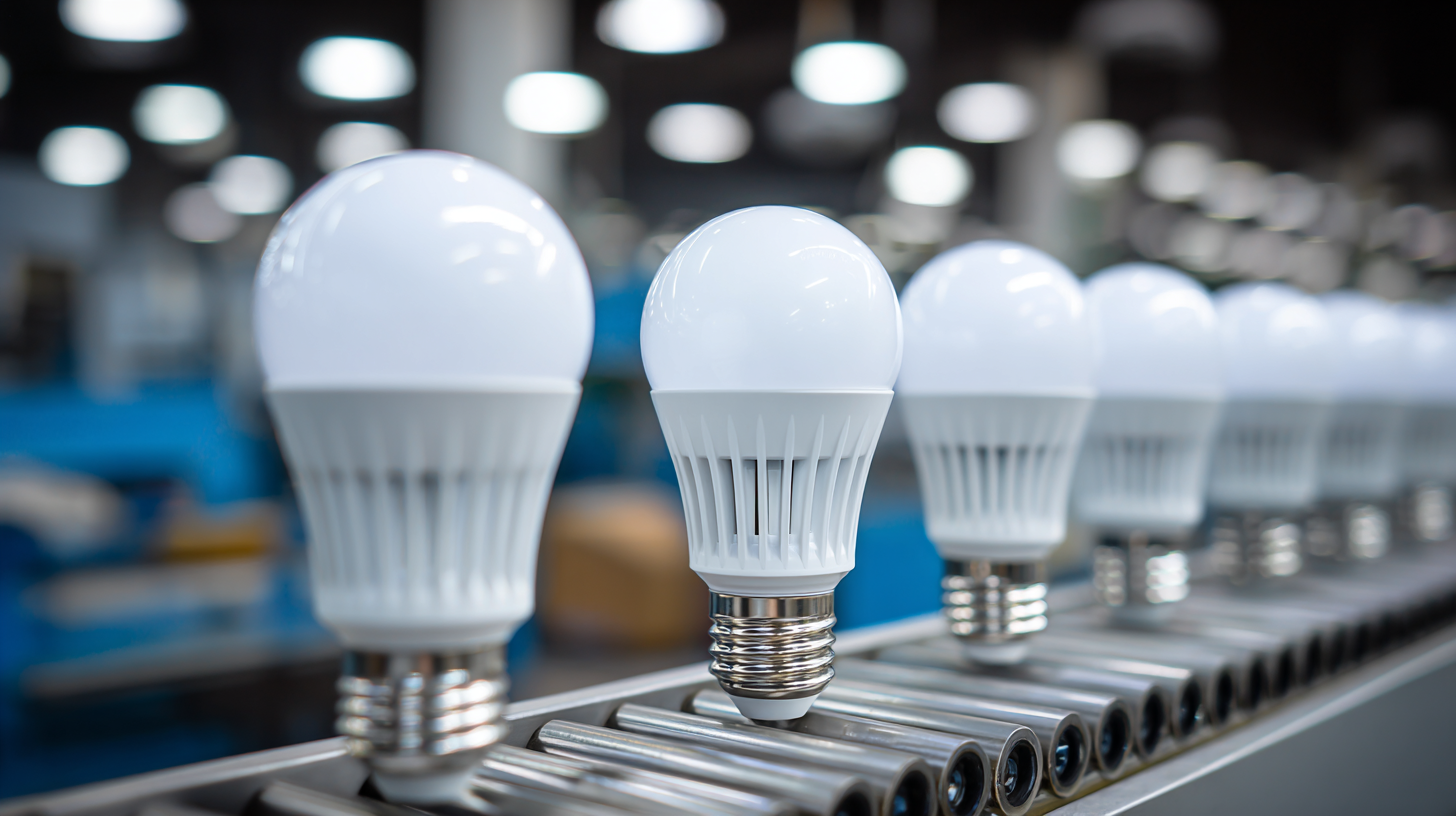Understanding Global Manufacturing Standards for Best Led Lighting Solutions
In the rapidly evolving realm of sustainable technology, LED lighting stands out as a pivotal player, revolutionizing energy consumption and illuminating the path toward greener solutions. According to a report by the U.S. Department of Energy, LED lighting is expected to account for 75% of all lighting sales by 2030, showcasing its growing significance in both residential and commercial sectors.

However, with the proliferation of manufacturers claiming to offer the best LED lighting solutions, choosing a quality manufacturer becomes crucial for ensuring compliance with global manufacturing standards. This decision not only affects the longevity and performance of lighting solutions but also contributes to overall energy efficiency and sustainability goals.
Understanding these standards—such as those set by the International Electrotechnical Commission (IEC) and other industry benchmarks—can empower businesses and consumers alike to make informed choices that align with their needs and environmental commitments.
Key Global Manufacturing Standards Influencing LED Lighting Quality
The importance of global manufacturing standards in LED lighting cannot be overstated, as these standards play a crucial role in ensuring product quality and safety. Key frameworks such as the International Electrotechnical Commission (IEC) standards and the American National Standards Institute (ANSI) guidelines serve as benchmarks for manufacturers worldwide. These regulations establish parameters for energy efficiency, performance testing, and safety protocols, helping consumers to identify reliable products in a crowded market.
Another significant standard influencing LED lighting quality is the Energy Star certification. This program not only promotes energy efficiency but also verifies that the products meet rigorous performance criteria. Compliance with Energy Star standards is a testament to a product's ability to reduce energy consumption while delivering optimal lighting performance. By adhering to these global standards, manufacturers not only enhance their credibility but also contribute to a more sustainable future. As consumers become more aware of the importance of quality in lighting solutions, the relevance of these standards will continue to grow, shaping the industry's trajectory.
Essential Certifications for LED Lighting Manufacturers Worldwide
In the evolving landscape of LED lighting, understanding essential certifications is paramount for manufacturers aiming to compete globally. Certifications serve as vital tools, not only for ensuring product safety and sustainability but also for tackling climate change. As sustainability becomes a central focus, manufacturers must navigate through various certification programs that assure end-users of environmentally responsible practices. The DarkSky Approved program, for example, provides objective, third-party validation for luminaires that minimize glare and light pollution, enhancing the quality of nighttime environments.
Experts predict that the LED light market will reach new heights by 2034, driven by substantial trends towards smart and energy-efficient lighting solutions. Compliance with recognized test standards, such as IEC62471, is crucial for manufacturers to ensure their products are safe and competitive. These certifications not only bolster credibility but also help combat greenwashing by promoting transparency in sustainable practices.
**Tips for Manufacturers:**
1. Invest in obtaining relevant certifications to enhance product credibility and appeal to environmentally conscious consumers.
2. Stay updated on the latest certification standards as the market continues to evolve towards energy efficiency and sustainability.
3. Engage with industry partners and participate in programs that focus on reducing environmental impacts to stay competitive in the global landscape.
Global LED Lighting Certification Standards
Top Tips for Selecting LED Lighting Solutions That Meet Global Standards
When selecting LED lighting solutions, it's crucial to understand and adhere to global manufacturing standards. These standards ensure that the products not only perform effectively but also maintain safety and energy efficiency. One of the top tips for choosing the right LED lights is to look for certifications from recognized organizations, such as ENERGY STAR or UL. These certifications provide assurance that the products meet rigorous testing criteria and are built to deliver long-lasting performance.
Another key aspect to consider is the quality of materials used in the manufacturing process. High-quality LEDs should have superior heat dissipation capabilities and durable housing to withstand various environmental conditions. It's beneficial to research the manufacturer’s reputation and seek products with a proven track record of reliability. Additionally, ensure that the lighting solution offers good color rendering and adequate lumens per watt to enhance both functionality and aesthetic appeal in any application. By prioritizing these factors, you can select LED lighting solutions that not only comply with global standards but also elevate your space efficiently and stylishly.
Understanding the Impact of Compliance on LED Lighting Performance
Compliance with global manufacturing standards is crucial for the performance and reliability of LED lighting solutions. A recent report by the International Energy Agency (IEA) highlights that compliant LED products can achieve efficiency improvements of up to 50% compared to incandescent lighting. These standards not only dictate safety and performance metrics but also establish benchmarks that ensure longevity and energy savings—a key factor in promoting sustainable practices.
The impact of compliance extends beyond mere performance; it significantly influences manufacturers’ market access. According to the U.S. Department of Energy, products that meet stringent regulations, such as those set by the Energy Star program, can enjoy a 25% increase in market share compared to non-compliant options. This emphasizes that adhering to global standards not only enhances product performance but also positions companies favorably in an increasingly competitive landscape. As adherence to compliance becomes fundamental, manufacturers are encouraged to invest in quality assurance processes to optimize their LED lighting solutions for both energy efficiency and regulatory success.

Innovative Technologies Enhancing Compliance with Global Manufacturing Standards
In the rapidly evolving world of LED lighting, adherence to global manufacturing standards has become increasingly crucial for both compliance and market competitiveness. Innovative technologies play a pivotal role in ensuring that products meet these stringent requirements. According to a recent report by the International Energy Agency, the global LED market is expected to grow by over 15% annually, emphasizing the need for manufacturers to harness advanced technologies that not only boost efficiency but also facilitate compliance with standards like the Energy Star and IEC 62031.

One groundbreaking technology making waves in the industry is smart manufacturing, which integrates IoT (Internet of Things) capabilities into production processes. This integration allows for real-time monitoring and quality control, significantly reducing the risk of non-compliance. A report by McKinsey & Company indicates that companies utilizing smart manufacturing can enhance productivity by up to 30%, all while ensuring that their LED lighting solutions meet international regulatory standards. As the industry continues to embrace such technologies, manufacturers will not only elevate their products' performance but also contribute to a more sustainable future in lighting solutions.
